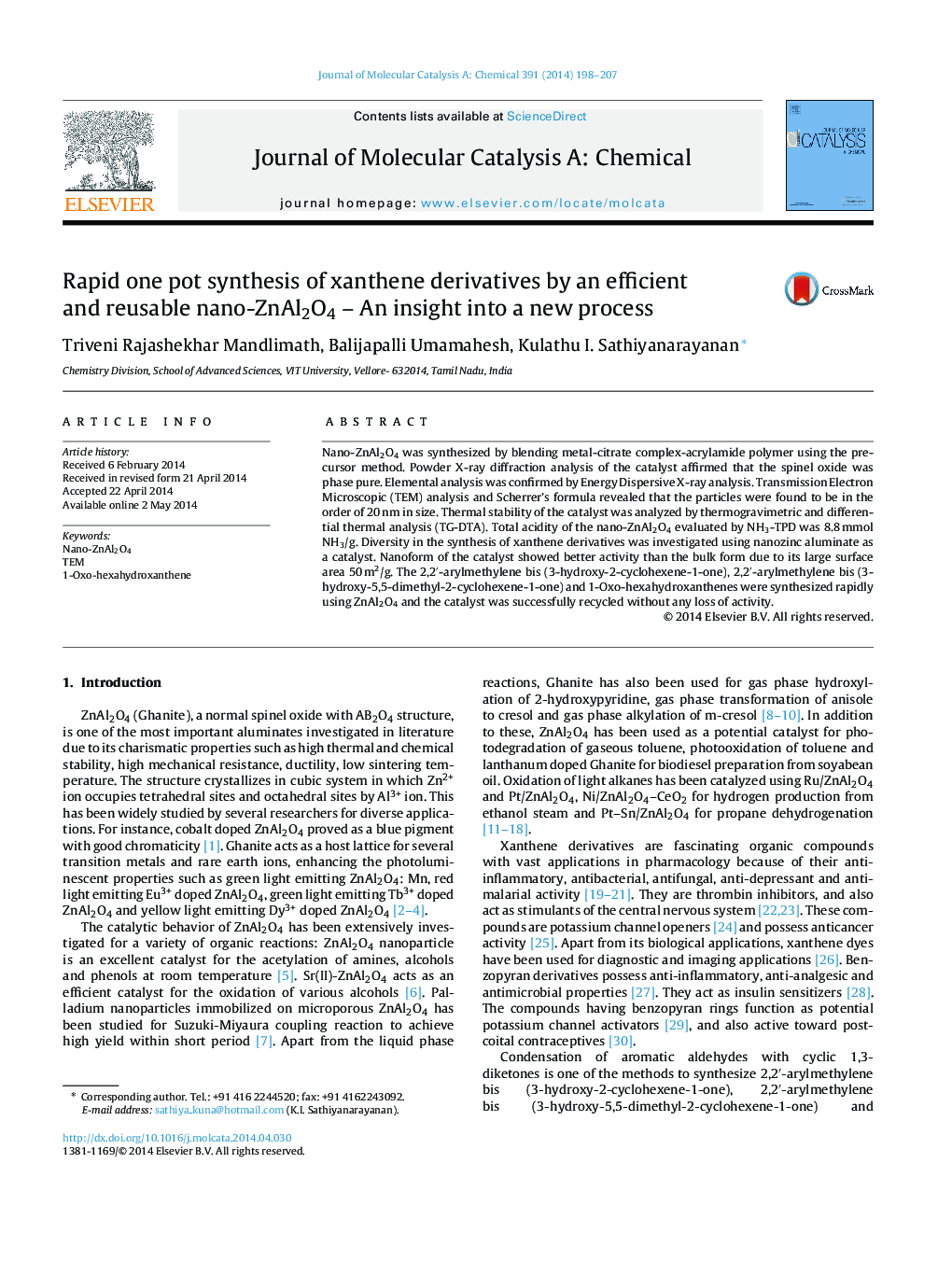| Article ID | Journal | Published Year | Pages | File Type |
|---|---|---|---|---|
| 65125 | Journal of Molecular Catalysis A: Chemical | 2014 | 10 Pages |
•Synthesis of nano-ZnAl2O4 by [metal citrate]-acrylamide polymer precursor method.•The nano-ZnAl2O4 nanoparticles were hexagonal-like with 20 nm in size.•Nano-ZnAl2O4 had 50 m2/g surface area and total surface acidity of 8.8 mmol NH3/g.•The nano-spinel oxide was an excellent catalyst for the synthesis of xanthenes.•We recycled the catalyst for 10 cycles with consistent activity.
Nano-ZnAl2O4 was synthesized by blending metal-citrate complex-acrylamide polymer using the precursor method. Powder X-ray diffraction analysis of the catalyst affirmed that the spinel oxide was phase pure. Elemental analysis was confirmed by Energy Dispersive X-ray analysis. Transmission Electron Microscopic (TEM) analysis and Scherrer's formula revealed that the particles were found to be in the order of 20 nm in size. Thermal stability of the catalyst was analyzed by thermogravimetric and differential thermal analysis (TG-DTA). Total acidity of the nano-ZnAl2O4 evaluated by NH3-TPD was 8.8 mmol NH3/g. Diversity in the synthesis of xanthene derivatives was investigated using nanozinc aluminate as a catalyst. Nanoform of the catalyst showed better activity than the bulk form due to its large surface area 50 m2/g. The 2,2′-arylmethylene bis (3-hydroxy-2-cyclohexene-1-one), 2,2′-arylmethylene bis (3-hydroxy-5,5-dimethyl-2-cyclohexene-1-one) and 1-Oxo-hexahydroxanthenes were synthesized rapidly using ZnAl2O4 and the catalyst was successfully recycled without any loss of activity.
Graphical abstractFigure optionsDownload full-size imageDownload high-quality image (83 K)Download as PowerPoint slide
